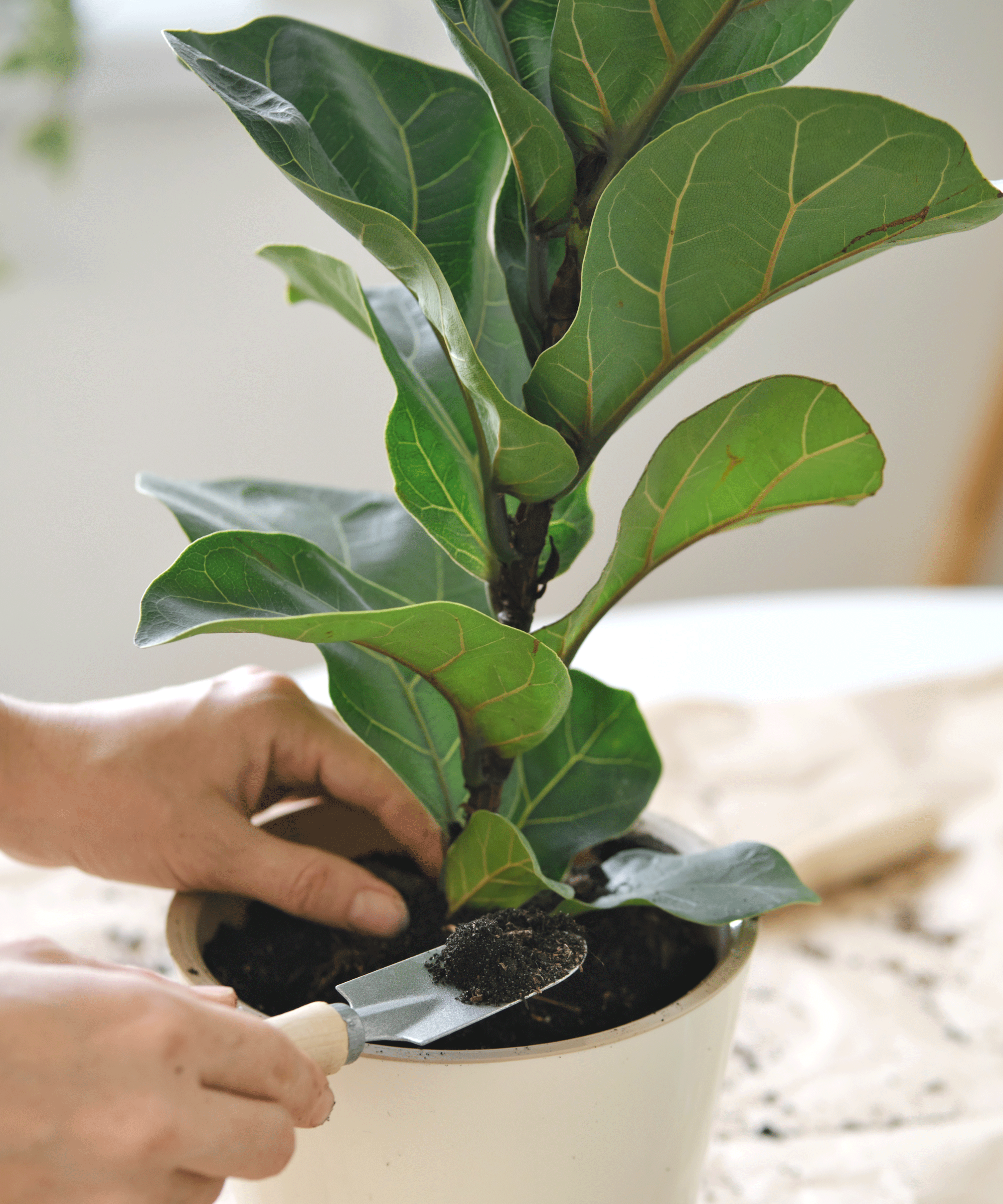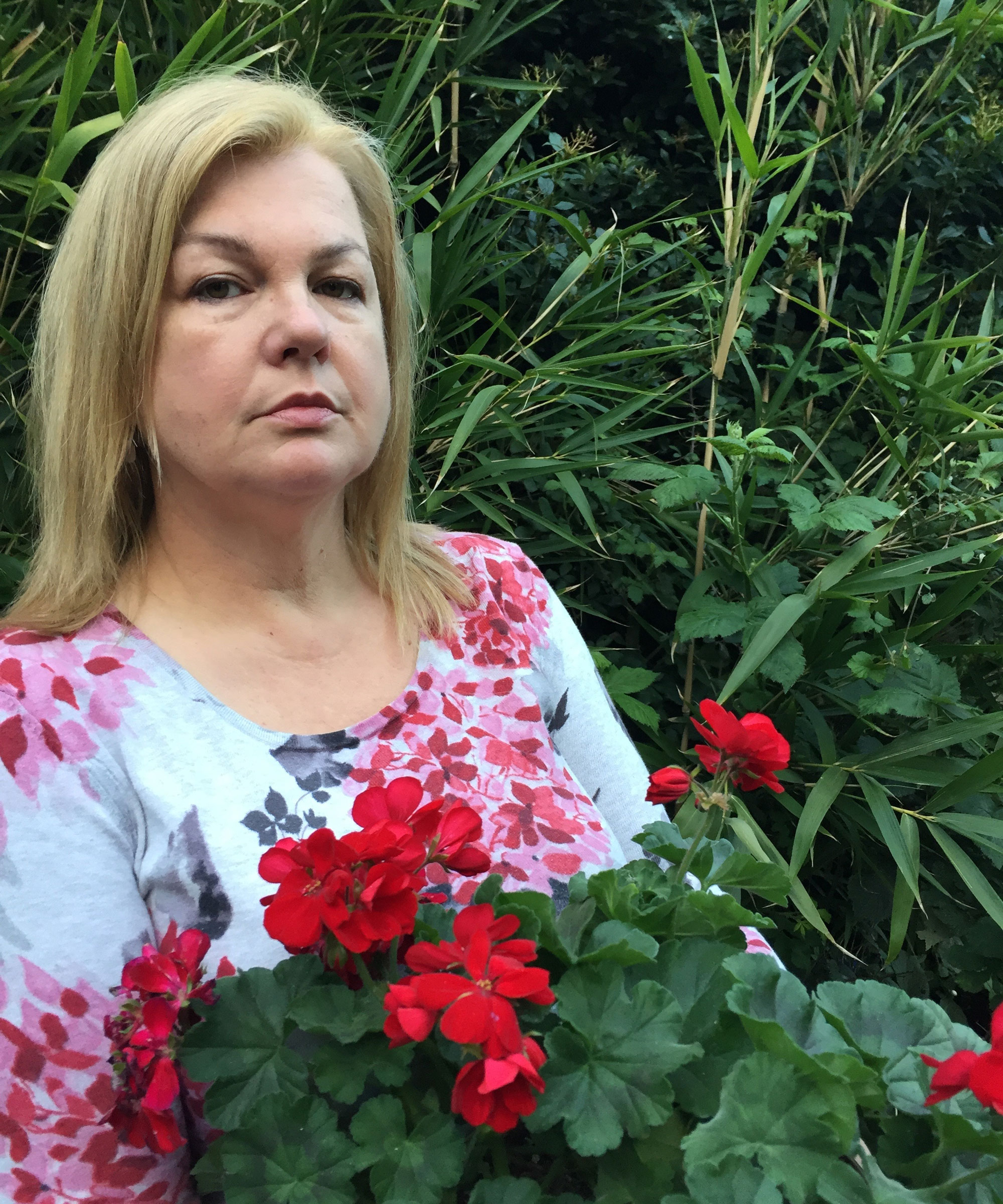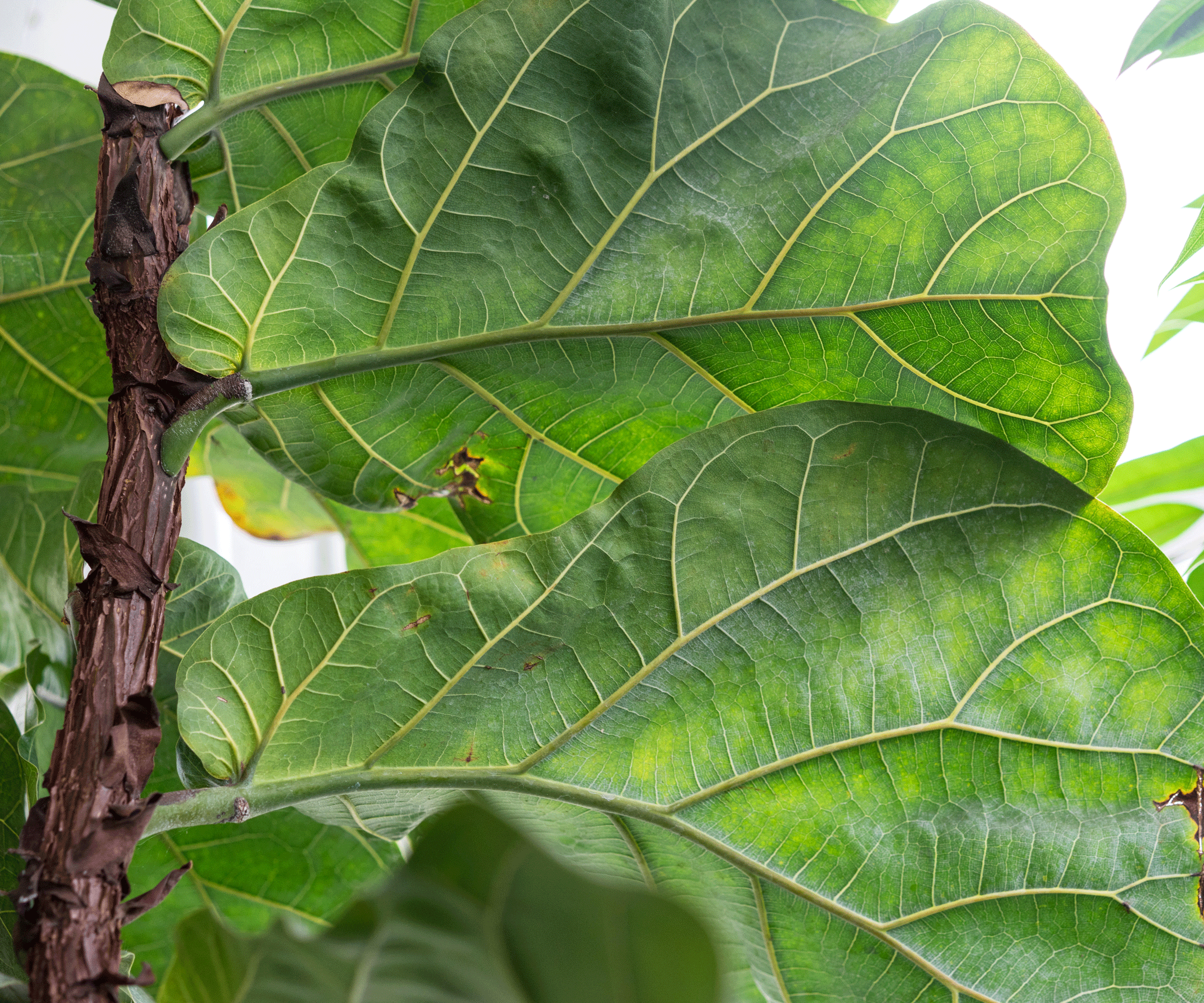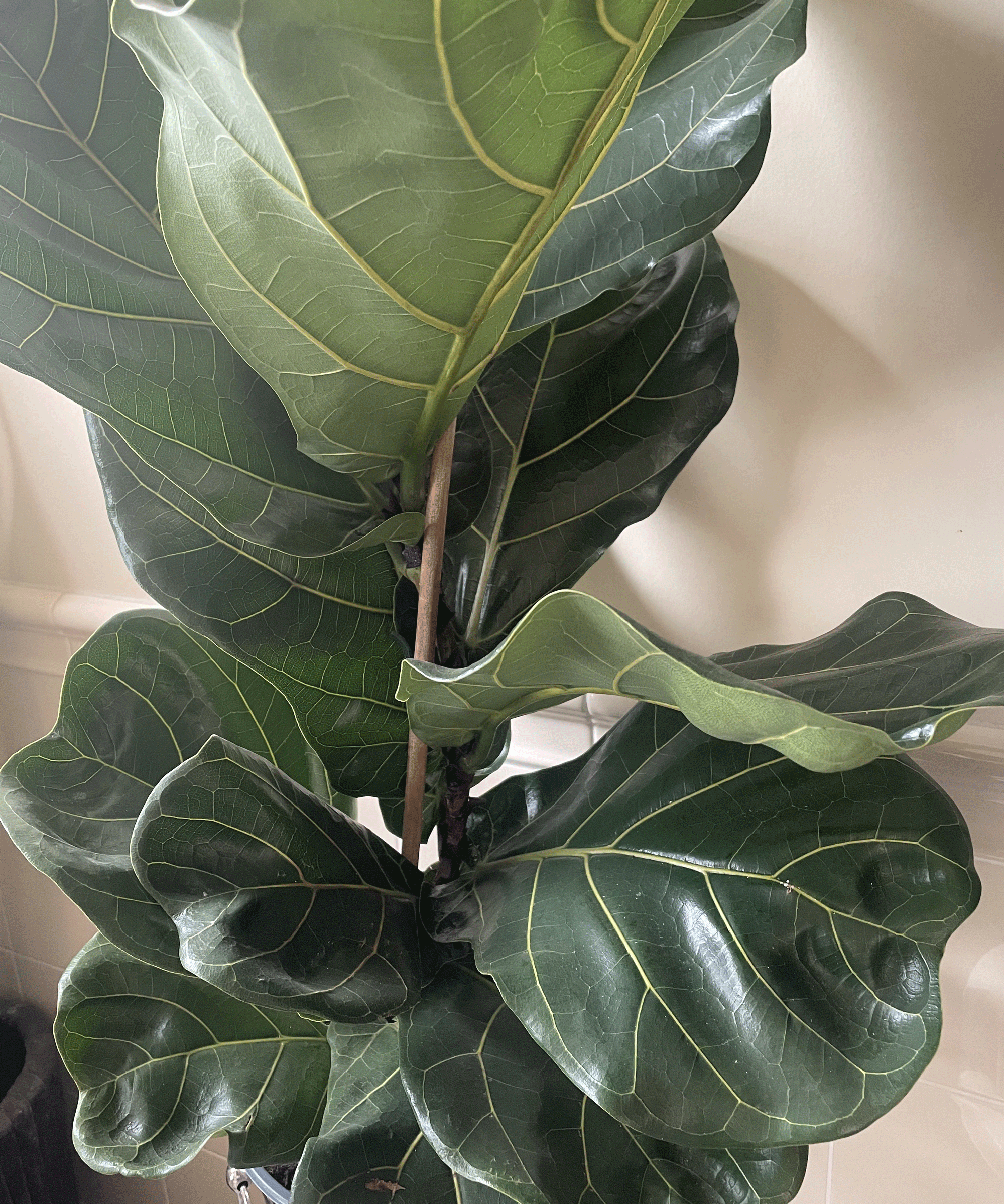Fiddle leaf fig root rot – expert tips on spotting the common signs, plus how to solve it
If your fiddle leaf fig is off-color it's a good idea to act fast and check out what's going on with the roots


If you've tried everything but your plant is still ailing it could have fiddle leaf fig root rot. Lifting the plant out of its pot and examining the roots isn't the first thing you generally think of when it comes to giving your fiddle leaf fig a health check. But I discovered it's important to look beneath the surface as the roots often provide the biggest clue when all is not well with your plant.
If your fiddle has discolored leaves, is dropping leaves at a worrying rate, or the leaves just don't look perky it could indicate that your watering schedule is off track and this has led to a problem with the plant's roots. Alternately root rot can be an issue if your fiddle plant isn't getting enough light. In either case it's always worth getting back to basics and checking that you're caring for a fiddle leaf fig correctly.
It's also worth mentioning that when buying a fiddle leaf fig be sure to pick out a plant with healthy roots. Either ask a store assistant to show you the rootball (easier for them to do if it's a large plant) or if it's a smaller one do a quick check yourself by carefully easing the plant out of its pot. It's important to do this as occasionally plants are sold that already have root rot. Now find out how I tackled the problem.

Trimmed roots, fresh soil and a new pot are the way to go post root rot scenario

Sarah Wilson has been writing about gardens since 2015, covering everything from garden design to houseplant care. She has studied introductory garden and landscape design as well as floristry. A proud houseplant parent, she enjoys tending to her collection of more than 50 indoor plants. She recently had to rescue one of her fiddle leaf figs that was suffering from root rot after being repotted in soil that was too dense and compact.
What are the signs of fiddle leaf fig root rot?
I found that issues with the leaves on my plant was the quickest way to spot fiddle leaf fig root rot. I knew something wasn't right as my fiddle leaf fig was dropping leaves and looking generally droopy. Other big clues that can indicate all is not well roots-wise include fiddle leaf fig leaves turning brown in patches, as well as yellowing on leaves.
If your plant is experiencing any of these symptoms it's time to take a close look at the root system. Ease your fiddle plant carefully out of its pot (this might be a two-person job if it's a tree-sized one you're dealing with like mine!) and check what's going on. If the roots are soft and mushy and the soil around them sodden, or if they're blackened (healthy roots are firm and orange or white color) or smell unpleasant this indicates you have root rot.

Brown or yellow patches can indicate your fiddle leaf fig has root rot
What to do if your fiddle plant has root rot
It’s important to act quickly once you notice signs of root rot. Damaged roots can’t absorb oxygen and nutrients and if the disease spreads it will eventually kill your fiddle. But as long as you act promptly your plant can recover fully, as I'm happy to say mine did.
To fix fiddle feaf fig root rot first wash the root ball and get rid of any sodden and infected soil. Next clip off any sections of damaged roots that have turned black, brown or mushy. Make sure you use sterilized pruning shears or scissors.
Design expertise in your inbox – from inspiring decorating ideas and beautiful celebrity homes to practical gardening advice and shopping round-ups.
You will need to sterilize the remaining roots too. 'Mix 1 part 3% hydrogen peroxide with 15 parts water and pour the solution into a spray bottle,' says Vladan Nikolic of mrhouseplant.com. 'Spray the plant’s roots with the hydrogen peroxide solution. After pruning, some of the harmful bacteria and fungi can remain on the roots, so by spraying the fiddle's roots you will kill any remaining pathogens. You can also use this solution to spray the new pot to sterilize it.'
Next, repot your fiddle leaf fig, then water the plant, and keep your eye on it until it starts to pick up again.

Three months after I discovered one of my fiddle leaf figs had root rot and all is well with my plant. In fact, it's never looked better
How to prevent fiddle leaf fig root rot
Overwatering is the most common cause of root rot in fiddle leaf figs. 'If the excess water stays in the soil, it will attract fungus that causes root rot,' says botanist Jennifer Green of positivebloom.com. 'When the roots are rotten, the plant becomes too weak and starts dropping leaves. When a plant sits in soggy soil, its roots cannot absorb oxygen and nutrients properly.' Find out how to water a fiddle leaf fig properly and that way you won't leave your watering routine to chance.
It's also important to make sure your fiddle leaf fig soil is well draining. Wet soil is the perfect breeding ground for fungi-like pathogens that cause Fiddle Leaf Fig root rot. 'The most common pathogens responsible for root rot are Pythium spp, Phytophthora spp and Fusarium spp,' explains Vladan Nikolic. 'They thrive in poorly drained potting mixes, so it’s vital to grow your fiddle in a porous, well-draining mix.'
Finally, your fiddle needs plenty of bright indirect light to thrive. Even fiddles grown in well draining soil are susceptible to root rot if they don’t get enough light. Position your plant a couple of feet away from a window but don't let strong sunlight fall directly on the foliage as this will burn and scorch leaves. Don't forget to clean fiddle leaf fig leaves regularly too so your rescued plant can photosynthesise more easily and green up again quickly.

Lifestyle journalist Sarah Wilson writes about garden design and landscaping trends for Homes & Gardens. She has studied introductory garden and landscape design, and also has an RHS Level 2 qualification in the Principles of Plant Growth and Development. She is a regular contributor to Homes & Gardens and Livingetc. She has also written for Country Living, Country Homes & Interiors, and Modern Gardens magazines